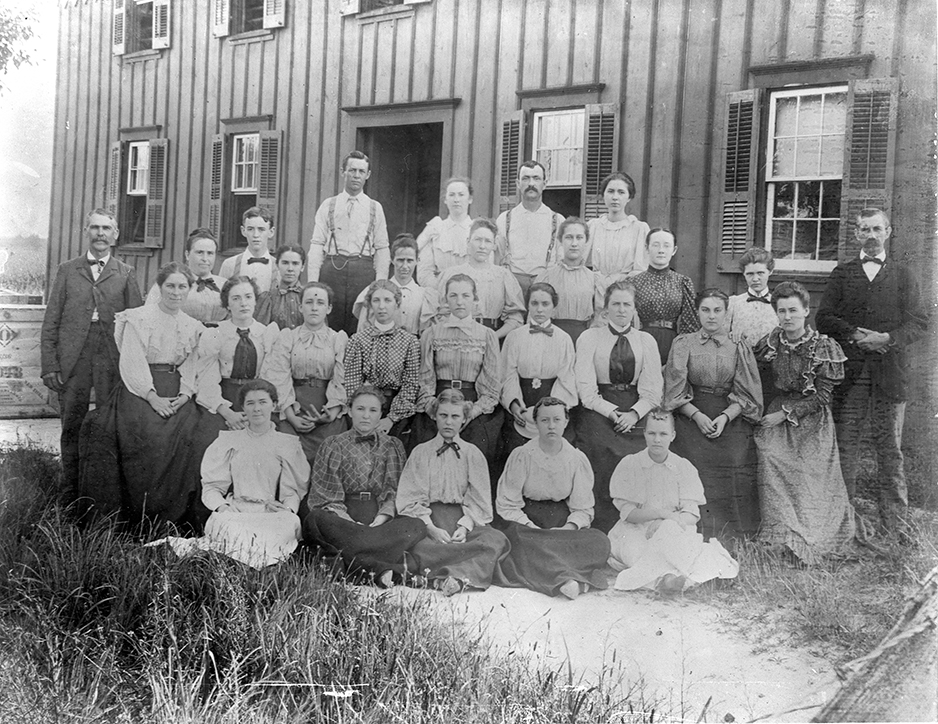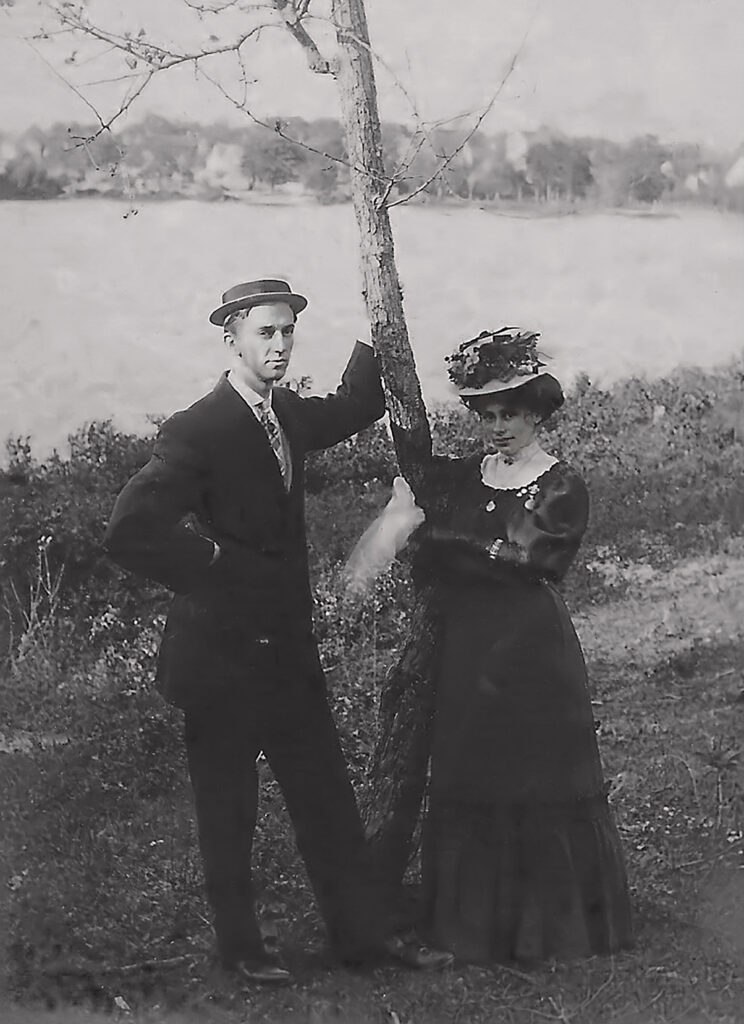There is no doubt that Thomas Hicks Douglass (1857 – 1933) and his son Dr. William Elbert Douglas (1885 – 1961) left their mark on Milton, and it is worthwhile to revisit their stories. There are no buildings, monuments or plaques commemorating their lives, and their accomplishments are thus obscure today. This post is dedicated to bringing them back from that obscurity.
Thomas H. Douglass was not a Delaware native; be was born in Preston, MD, to a farming family, and grew to adulthood on Maryland’s Eastern shore. The years 1880 and 1881 were fateful for him; his mother had died when he was only 11, and his father died in 1880, making him an orphan at age 22. In 1881, he married Eugenia Willoughby, another Maryland native. Up until his marriage, he was working as a store clerk. But, as so often happened in his time, marriage and the prospect of children spurred him to make something more of himself. He and Eugenia moved to Milton in 1884, and he opened his first business – a drug store. The following year, Eugenia gave birth to their first son, William Elbert. Their second son, Leighton Coleman, was born in 1889.
The drug store was successful enough that he could obtain enough capital for a larger scale venture; in 1896, he and N. Wallace White built and opened the Douglass and White Shirt and Overall Factory on Atlantic Avenue. The economic importance of the Douglass and White garment operation was very big in a small town like Milton; for twenty years it provided year-round employment for 70 or more townspeople, most of whom were young female sewing machine operators. These young ladies brought extra income home to their parents which was then pumped back into local businesses. Of course, women of such quality could not be retained for long; as quickly as they were trained, they attracted suitors and got married.

In 1916, the partnership of Douglass and White was dissolved and the factory sold to William E. Graves & Son Garment Co. who continued to operate it. At this point Thomas Douglass became interested in banking and worked in that industry until his death.
William Elbert Douglas chose a different path from his father, even to the extent of dropping the second of the two S characters from his surname. After graduation from Milton High School in 1903, William pursued a correspondence course in pharmacy from the International Correspondence School, which he completed; perhaps this was something his father had suggested, or perhaps William himself desired to follow in his father’s early footsteps. By the time he completed the course, however, he found that being a physician was what he really wanted. He enrolled in the Jefferson Medical College in Philadelphia and graduated in June of 1909, receiving his license to practice medicine later that month. Returning to Milton in 1909, he married Elizabeth Ellis in 1910. The couple moved in with William’s parents in the latter’s Union Street home until he could establish his practice and find his financial footing.

William and Elizabeth would go on to have three children and be an integral part of community life in Milton. He would remain a family doctor there until his retirement in 1947, after which he moved to Rehoboth Beach. Upon his death in 1961, he was remembered for his 37 years of practicing small town medicine, delivering more than 1,600 babies, and serving on local business boards. Many would describe it as a life well lived in the service of others. However, there is one aspect of Dr. Douglas that was overlooked or forgotten: he left a collection of photographs that, in my opinion, are a remarkable visual record of early twentieth century Milton. Sometime after he returned to Milton from medical school, he acquired one of the new consumer-friendly cameras sold by Kodak that used roll film instead of glass plates for negatives, and were thus very portable. He shot scenes along Milton’s major streets, the Broadkill River wharf, Wagamon’s Pond and the several canneries around town, among other subjects. For reasons known only to him, he did not take photographs of people except at a distance. Fortunately for us, Dr. Douglas photographed scenes of the businesses on Union Street, Front Street and Federal Street prior to August 13, 1909. By 5:00 AM of that day, the downtown business district he had photographed previously was a smoldering ruin. He would end up photographing the destruction, creating the only known record of it.
It is no coincidence that I have chosen to publish this post just as a new exhibit has opened at the Lydia B. Cannon Museum. Titled Milton’s Hottest Summer: The Great Fire of 1909, the exhibit tells the story of the fire of August 13, 1909 that destroyed the major part of Milton’s business district south of the Broadkill River. A major part of the exhibit consists of the photographs of Dr. Douglas. Long after living memory of his healing arts has disappeared, his photographic legacy will continue to engage people with its views of a distant past, of the routines of small town life and the devastation wrought by fire.
To view a sampling of the photographs of Dr. William Elbert Douglas, follow this link to a past blog post on the subject.


Great pictures. Thanks. My folks talked about Dr. Douglas and later Dr. Tobin. Milton was lucky to have good doctors. Neal Welch, Grandson of William H. Welch.
Good to hear from any of the Welch family!